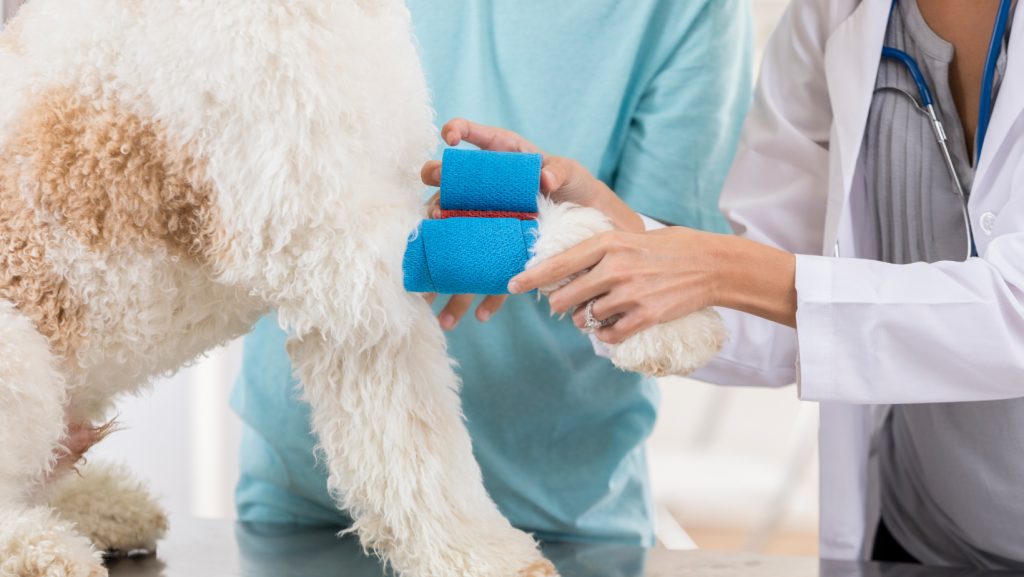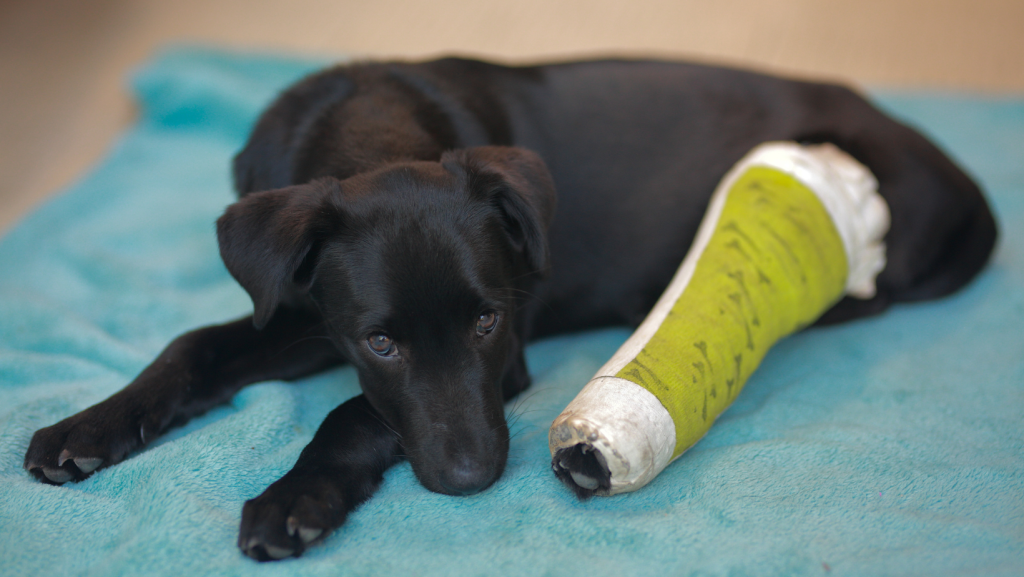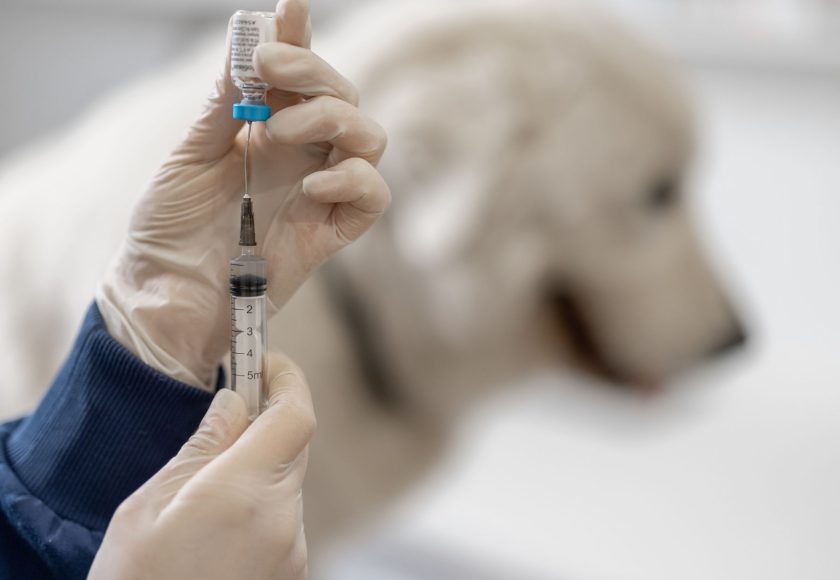A Begemotas veterinarian—orthopedist—traumatologist claims that if your pet is properly raised, fed, and gets enough exercise, there is an 80 percent chance that its joints will be healthy and it will avoid limping problems.
But what should you do if your dog is limping on its front or back leg?
Even the smallest injury to the leg can cause a dog to limp. A dog may limp due to a broken nail, a wound on the paw or between the toes, joint disease, bone trauma, genetics, poor nutrition or excess weight, or insufficient physical activity.
Table of contents
A dog may limp due to joint disease.
The most common cause of limping in dogs in veterinary medicine is joint disease. Joint diseases can be inflammatory or traumatic in nature. Osteoarthritis, osteoarthrosis, or arthrosis in dogs is the most common degenerative joint disease in dogs, associated with constant joint trauma and aging processes.
This is the most common cause of lameness in dogs older than 5 years. Joint inflammation can cause lameness in the front and hind legs.
Arthritis is often treated with anti-inflammatory drugs and special joint supplements. Begemotas veterinarians always select treatment based on the dog’s condition and the owners’ needs.
For lameness caused by osteoarthritis in older animals, veterinary orthopedists recommend a long-acting, innovative drug treatment that relieves the dog’s pain for a month, and sometimes even longer, with a single injection.

The dog is limping due to ligament damage, a torn meniscus, and a dislocated kneecap.
Traumatic joint diseases involve not only trauma to the joint itself, but also damage to related structures such as ligaments or menisci. Torn knee ligaments or menisci are a common cause of limping in dogs.
The veterinarian emphasizes that dogs most often limp on their hind legs after jumping off the bed or running around outside. Such limping should not be ignored. It is very important to seek help from a veterinarian—an orthopedist or traumatologist—in a timely manner so that torn cruciate ligaments or a ruptured meniscus do not cause additional complications in the joint and muscle development stages.
In small breeds such as poodles, bichons, or terriers, hind leg lameness is more often associated with patella problems. In many cases, veterinarians diagnose small breeds with hind leg lameness as having a dislocated patella.
In veterinary orthopedics and at the Begemotas Clinic, surgical treatment is increasingly being used to treat the causes of hind leg lameness in dogs. According to orthopedists, this type of surgery eliminates the cause of hind leg lameness in dogs for the rest of their lives.
The dog is limping due to broken bones
A dog may limp due to trauma. Broken or cracked bones often cause a dog to limp when walking, as it does not put weight on the affected limb. A fracture sustained during an injury must be diagnosed as soon as possible and operated on 24 hours after the injury, when all surrounding tissues have fully reacted. An open bone fracture can be very dangerous to a dog’s life.

A dog may limp due to genetic inheritance
Elbow and hip dysplasia are painful, genetically transmitted disorders. Between 15 and 40 percent of cases of these diseases are hereditary and are characteristic not only of large breeds of dogs, but also of small, short-legged breeds such as dachshunds, bulldogs, and terriers.
Changes in the joint occur when puppies are 4–6 months old, when impaired bone development damages the blood vessels that feed the bone. The symptoms of joint dysplasia can only be noticed in the later stages of the disease, when the dog begins to limp and its gait changes.
Elbow dysplasia causes pain and limping in the front legs of dogs, while hip dysplasia causes limping in the hind legs and pain when standing or lying down. Dogs with joint dysplasia should not be bred, and all offspring should undergo preventive examinations at 12-18 months of age.
If a 12-18-month-old dog is found to have dysplasia during testing, it is very important to find the best method of supporting healthy joints with supplements and proper exercise. Proper nutrition, joint supplements, and proper exercise can delay joint pain, discomfort, and lameness.

Where to go if your dog needs help due to lameness?
The Begemotas Veterinary Clinic uses all the most innovative methods for diagnosing and treating the causes of lameness. At the Begemotas Veterinary Clinic in Vilnius, lameness in dogs is diagnosed using X-rays and ultrasound, and osteoarthritis is treated with hyaluronic acid injections into the joint, tendons, and capsule between the joints, which lubricate the joint from the inside. Platelet-rich plasma therapy (PRP) is also used to reduce pain and inflammation.
According to the Begemotas specialist, the causes of lameness in dogs, especially in the joints, are treated conservatively with pain medication, various therapies, therapeutic exercises, and rest.
If these methods do not help or the lameness is traumatic in origin, surgical treatment is required, during which the anatomically altered joint is identified, fixed, and an implant is inserted. Dogs can have their joints replaced with artificial ones, just like humans. The larger joints are most often replaced – knees, elbows, hips, and rarely shoulders.






